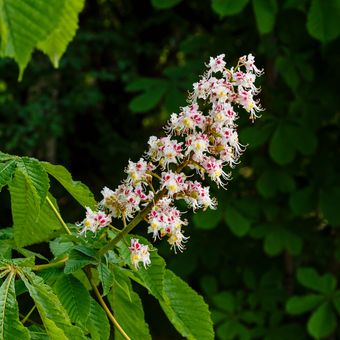Plantcompass
Horse chestnut (Aesculus spp.)
General Information
Family: Soapberry family (Sapindaceae)
Flowering period in Central Europe: Early to Full Spring
Months: 4–6
Allergy potential
Low allergenicity.
Cross-reactions
Possible cross-reaction with maple pollen due to close familial relatedness.
Botanical Information
Distribution
Native to North America, Southeast Europe, and Turkey, from the Caspian Sea across the Himalayas to Southeast Asia to Japan. Plains to lower mountainous regions. Introduced and widely distributed as a street and park tree in Europe.
Morphology
Habit — Tree. Foliage — deciduous, pinnately compound leaves with 5–7 elongated, inversely egg-shaped leaflets, leaf margin serrated. Reproduction — monoecious, inflorescence bisexual, upright (colloquially candles), spiny capsule fruits (chestnuts).
Common species in Europe
Common horse chestnut (Aesculus hippocastanum).
Habit — Tree. Habitats — Popular street and park tree. Since the 1990s it is plagued by severe pest infestations (horse chestnut leaf miner).


